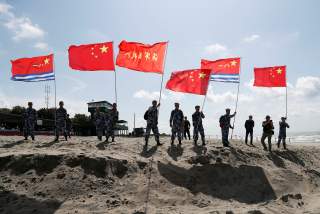China Studies the Contours of the Gray Zone
Beijing strategists go to school on Russian tactics in the Black Sea.
First, Beijing and Moscow both wield very considerable and indeed credible combat power in these proximate domains. That is simply the nature of fighting along interior lines, as any strategist knows. Second, and even more importantly, both of these great powers have the will to “go to the mat” to control (or nearly so) the outcomes of brush-fire conflicts on their borders. For Americans, the stakes are much murkier, to say the least, and may even approach the absurd. The double asymmetry, in both military capabilities and the will to use them, therefore constitutes “trumps” and means that Russia and China will continue to roll.
Does that mean that Washington needs to redouble its efforts, sending suitcases of cash to build up the Ukrainian and Philippine navies and coast guards, etc.? No. Such efforts to date have regrettably made these tense situations worse. A more mature and realistic strategy would recognize that spheres of influence cannot be wished away with soaring rhetoric, nor can the stark reality of the balance of power (or lack thereof). An essential part of the United States learning to live in a multipolar world will be the admittedly difficult task of adapting American diplomacy and defense strategy to this new set of circumstances.
Lyle J. Goldstein is Research Professor in the China Maritime Studies Institute (CMSI) at the United States Naval War College in Newport, RI. In addition to Chinese, he also speaks Russian and he is also an affiliate of the new Russia Maritime Studies Institute (RMSI) at Naval War College. You can reach him at [email protected]. The opinions in his columns are entirely his own and do not reflect the official assessments of the U.S. Navy or any other agency of the U.S. government.
Image: Reuters

